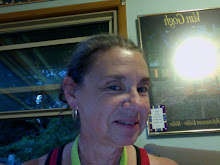A friend was talking the other day about dissatisfaction with her life. We had been discussing this paragraph from Dzigar Kongtrül's book It's Up to You: The Practice of Self-Reflection on the Buddhist Path
Someone asked me recently if I am afraid to die. Truthfully, I am more afraid of not living my life fully--of living a life dedicated to cherishing and protecting myself. This fear-driven approach to life is like covering your couch in plastic so it won't get worn. It robs you of the ability to enjoy and appreciate your life. [p. 35]
The paragraph is from Kongtrül's chapter on "Training in Courage," pages I have particularly needed of late.
We've probably all had, at one time or another, the special thrill of sitting on the slippery edge of plastic-wrapped furniture. This is especially fun as part of a nervous encounter, when the backs of your knees start to sweat and you are in danger of sliding off. I can't say I've ever been tempted to adopt this domestic style, though I do live with legendary and prolific spillers, and a couch-potato greyhound/lab mix. The concept itself conjures an image of a fussy old lady nervously eying her lightly perched guests and their proximity to breakables. But my first introduction to this preserving practice was in the home of a busy young ICU nurse and her cardiologist husband, who referred to their expensively furnished living room as "the museum." Let's just say, though, that Kongtrül makes his point, and that few would be drawn to the idea of risk-free living.
 On the contrary, we live in an age where "pushing the envelope," "thinking outside the box," and going "into the wild
On the contrary, we live in an age where "pushing the envelope," "thinking outside the box," and going "into the wildBut we maintain a love/hate relationship with risk. Adolescents are described as engaging in "risk-taking behavior" when we speak of some of their more dangerous "decisions" and actions--having unprotected sex, experimenting with recreational drugs, and unsafe (and too often inebriated) driving. At the same time, overly cautious investors, at least before the recent and rather calamitous "economic downturn," were referred to as "risk-averse"--and that was not a compliment. As a culture, ours could be described, at this point in time, as risk-enamored, but gun-shy.
Once again, balance seems critical. My yoga teacher reminds our class regularly that we should be "balancing effort and ease," as we huff our way through strenuous poses. It seems to me wise to balance growth and safety, reward and danger, as my triathlon training schedule interweaves building and rest. And no one can decide for us what is our own optimal balance. Only we can determine, ultimately, how to respond to that nagging sense, as for my friend, that we could be doing more with our lives. In her case, our discussion revealed that she was actually accomplishing some pretty exciting and meaningful things at work, and had embraced some real adventures personally. So is her dis-ease with the limits of life itself, in light of our societal ideal of endless peak experiences? Or is it a message she should heed by attempting to figure out what is missing and what she wants to be doing, and to do it? That is obviously for her to decide.
For myself, I want to value both the easy and hard parts of my life, and its satisfactions and comforts, large and small, the once-in-a-lifetime and the everyday. And to listen to my heart, in both its pounding and its steady states.













No comments:
Post a Comment